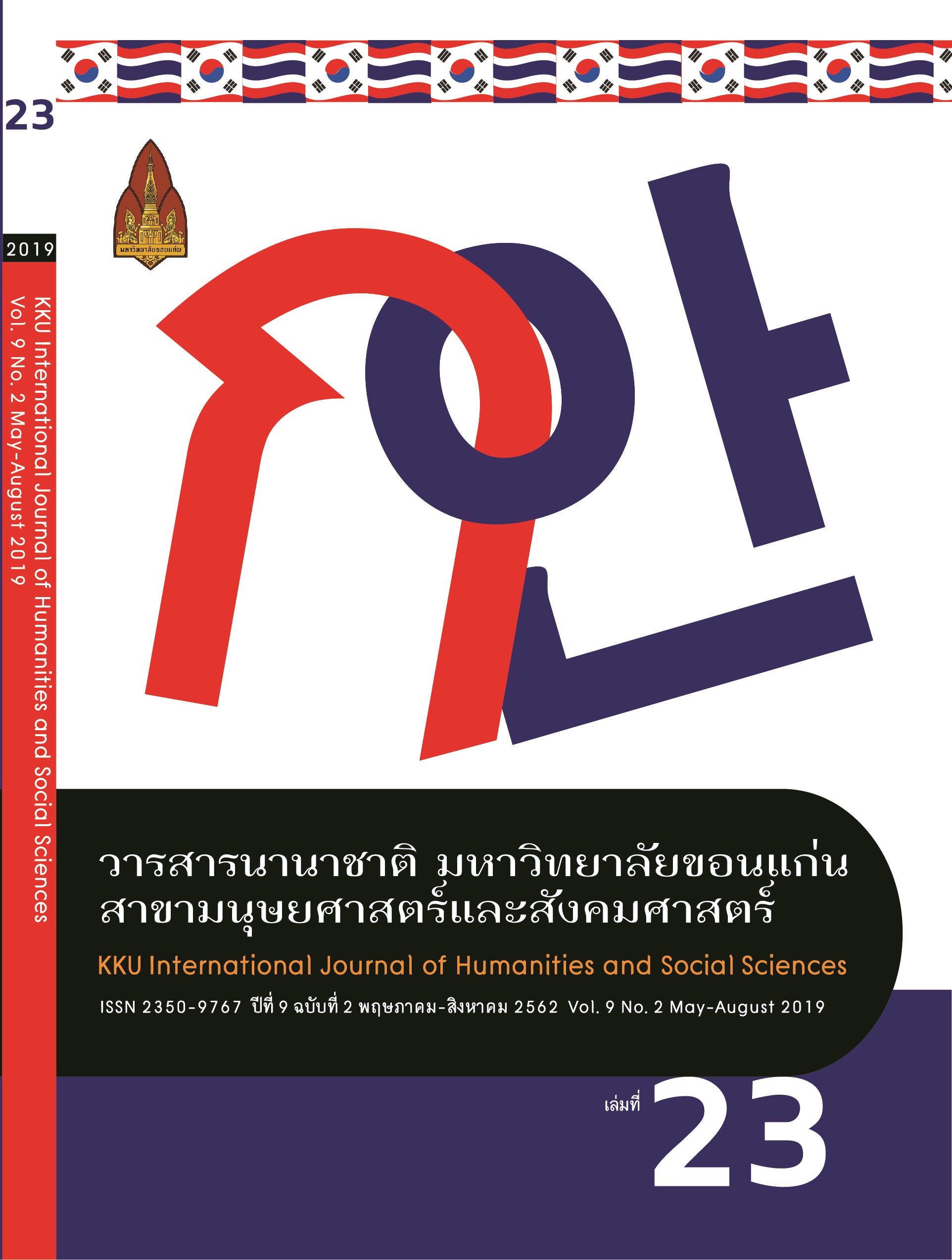Meanings of Cultural Landscape in Sakon Nakhon City
Main Article Content
Abstract
The purpose of this paper was to explore the changes in the meanings of cultural landscapes drawn from the historical old town of Sakon Nakhon City through different periods of time, by adopting the conceptual framework concerning the discourse construction for meaning interpretation. The research process was done through an examination of related publications and archaeological evidences and a field survey to analyze the relationships concerning political, administrative, economic, social and cultural contexts in each period. Then, the meanings given to cultural landscape in each period were concluded. Results from the study revealed that human settlement in Sakon Nakhon began around the pre-historical period. A range of meanings of cultural landscape thus overlapped and changed over time. Through stories and legends, some meanings of cultural landscapes become recognizable, but the most important factor contributing to the survival of meanings was the repetition of such meanings through rituals or traditions, which were important to the existence of meanings and created common memories among local people to remember the original meanings. This would be the important guidelines in conserving and restoring the cultural landscape.
Article Details
References
Boonyothayan, S. (2006). 1000-Years Solar Calendar of Phu Phek Castle of Sakon Nakhon Province. Nakhon Pathom: Naiyanaprapai Printing House.
Buddee, C. (2012). Usa Barose Legend in Wat Phra Phutthabat Buaboke version: The Development of the Character and the Interpretation of the Geographic Area. Journal of Mekong Societies, 8(3), pp 167-190.
Charoensinolan, C. (2011). Developmental Discourse. 5th Ed. Bangkok: Wipasa Publishing.
Connerton, P. (1989). How Societies Remember. United Kingdom: Cambridge University.
Documentation and Archives Processing Committee. (1999). Historical Developments, Identities and Wisdoms of Sakon Nakhon Province. Bangkok: Kurusapa Printing.
Erll, A. (2011). Memory in Culture. Translated by Sara B Young. United Kingdom: Macmillan Publishers Ltd.
Foucault, M. (1970). The Order of Things: An Archaeology of the Human Science. New York: Vintage Book.
Heine-Geldern. (1942). Conceptions of State and Kingship in Southeast Asia. Journal of Asean Studies, 2 (01), pp 15-30.
Iyer, T. (1980). Indian Architecture. Delhi: Mehra Offset Press.
Keyes, F, C. (1989). Buddhist Politics and Their Revolutionary Origins in Thailand. Sage Journals, 10, pp 121-142.
Kingmanee, A. (1997). Stone Castles and Khmer Arts in Sakon Nakhon Province. Bangkok: Fine Arts Department.
Lefebvre, H. (1991). The Production of Space. Translated by D. Nicholson-Smith. Oxford Blackwell.
Nanthajak, A. (1994). Isan Case Study: A Material for the Instructions of Political History and Thai Society. School of Political Sciences, Sukhothai Thammathirat University.
Pojanalawan, P. (2015). Birth of “Thailand” under Dictatorship. Bangkok: Matichon.
Preeyawanit, N. (2017). Economic and Politic Aspects of Road Construction in Bangkok Metropolitan Region during the reigns of King Rama I – V. Bangkok: E T Publishing.
Pruess, B. (1976). The That Phanom Chroniale: A Shrine History and Its Interpretation. Data Paper No. 104. New York: Department of Asian Studies, Cornell University.
Reynolds, F., and Reynolds, M. (1982). Three Worlds According to King Ruang: A Thai Buddhist Cosmology. The Institute of Buddhist Studies, University of California: Asian Humanities Press.
Smith, L. (2006). Use of Heritage. London and New York: Routledge.
Tantinipankul, W. (2009). Changes in the concept of building and restoration of the royal temple in the reign of King Rama V up to the present: conflicts in the preservation of ancient sites and nationalist culture. In Kriangkraipetch, S. (Ed), History in cultural education dimensions Overhaul of cultural studies, pp 208-296. Bangkok: Sirindhorn Anthropology Centre.
The Fine Arts Department. (1994). Breast-Bone Relic (Legend of Phra That Phanom). 3rd Ed. Bangkok: Rueankaew Publishing House.
Warangrat, S. (1994). History of Sakon Nakhon. Sakon Nakhon: Sakon Printing.
Wanlipodom, S. (2003). Isan Civilization Site. 4th Ed. Bangkok: Matichon Publishing.
____________. (2011). Thailand’s Sociocultural Progress. Bangkok: Muang Boran Publishing House.

